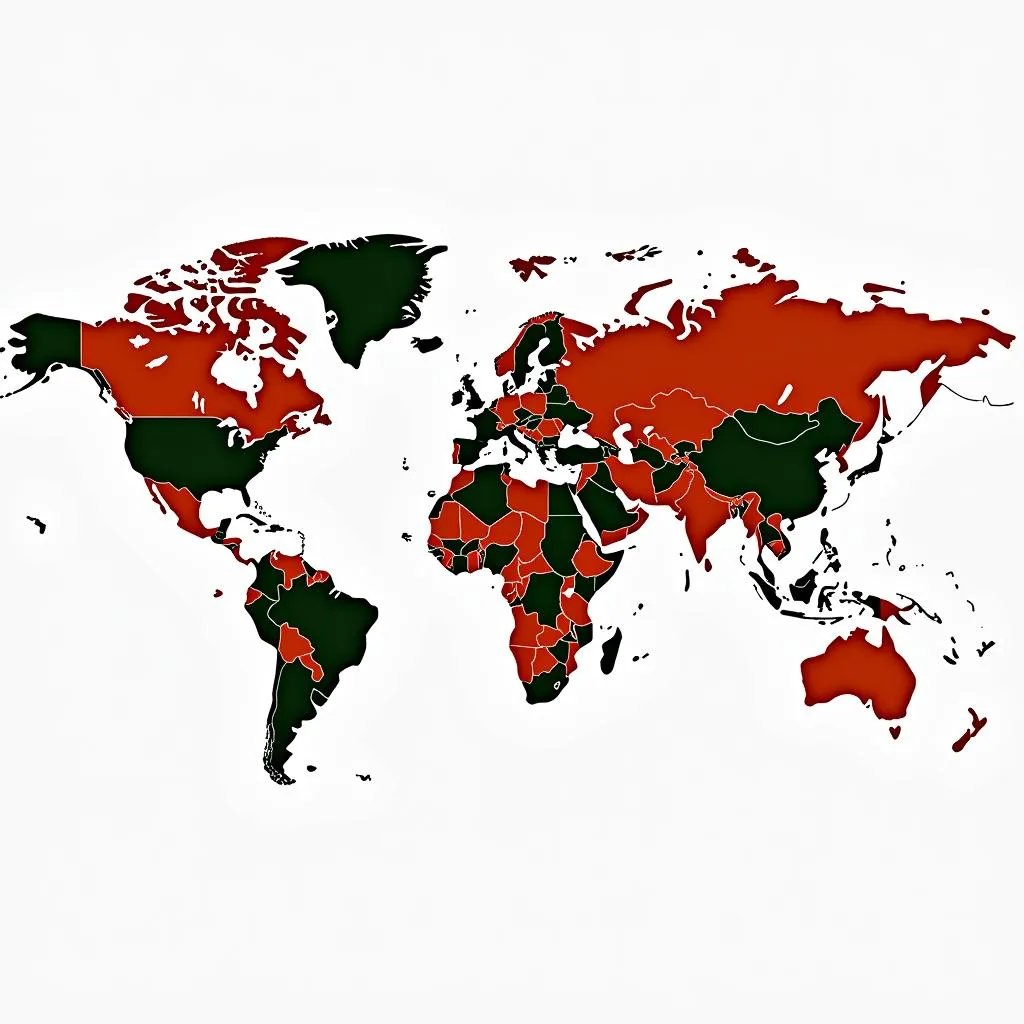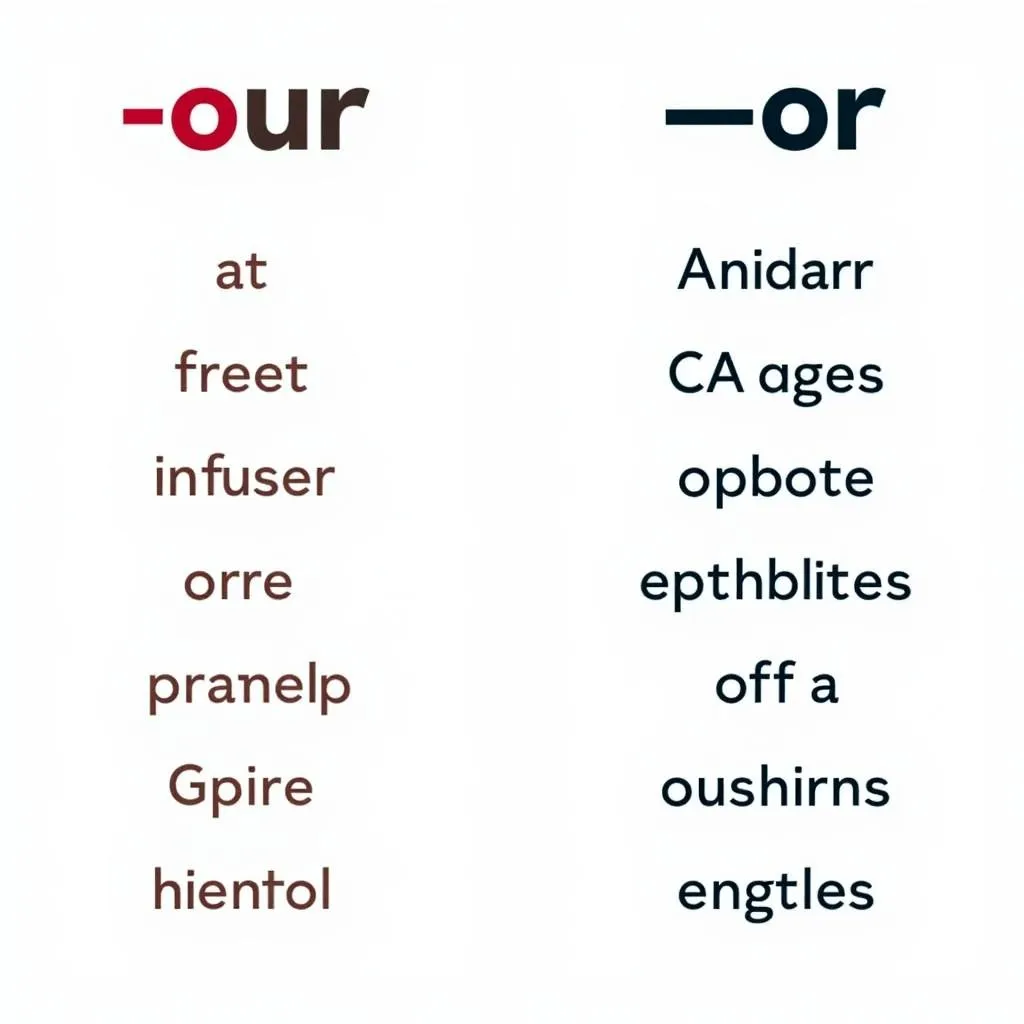The eternal question that has plagued English speakers for centuries: is it “colour” or “color”? While seemingly simple, this spelling conundrum exposes a fascinating linguistic divide between two dominant English variations – British and American. As a color expert and design enthusiast, I’m here to shed light on this colorful debate and help you navigate the world of hues with confidence, no matter how you spell it!
Let’s delve into the history and evolution of these two spellings and explore the reasons behind their persistent presence in our language.
The Root of the Matter: A Tale of Two Spellings
The “u” in “colour” didn’t appear out of thin air. Both spellings, “colour” and “color,” have roots in the mists of time, stretching back to the ancient Romans and their influence on the development of the English language.
-
Latin Origins: The word “color” can be traced back to the Latin word “color”. This Latin term served as the foundation for the spelling of “color” as we know it today.
-
French Influence: With the Norman Conquest in 1066, French became the language of the English court and administration. French, like Latin, used the spelling “colour”. Over time, this spelling was adopted into English, coexisting alongside the original “color”.
Across the Pond: The American Way
As English made its way to the New World with the colonists, a preference for simplified spellings emerged. Notable figures like Noah Webster, the lexicographer behind the first American dictionary, championed these changes.
- Webster’s Influence: Webster’s 1828 “American Dictionary of the English Language” embraced simplified spellings, including “color,” “honor” (instead of “honour”), and “center” (instead of “centre”). These modifications were driven by a desire to create a more standardized and accessible language for the newly formed nation.
The Great Divide: British vs. American English
Today, the Atlantic Ocean marks the most significant dividing line in the “colour” vs. “color” debate.
-
British English: In the United Kingdom, Canada, Australia, and many other Commonwealth countries, “colour” reigns supreme. This spelling is considered standard in formal writing and education.
-
American English: Across the United States, “color” is the preferred and accepted spelling. You’ll find it in books, newspapers, websites, and everyday communication.
 British and American English Maps
British and American English Maps
Beyond Borders: When Context is Key
While geography plays a significant role, it’s not always as simple as black and white (or should we say, black and white?).
-
Technical Fields: In scientific and technical writing, “color” is often the preferred spelling, even in British English contexts. This is largely due to the global nature of these fields and the influence of American scientific publications.
-
Brand Names and Titles: Brand names and titles often stick with the spelling conventions of their country of origin. For instance, a British company might call itself “Colourful Creations” while an American counterpart might opt for “Colorful Concepts.”
Is One Right and One Wrong?
The beauty of language lies in its fluidity. There’s no definitive “right” or “wrong” when it comes to “colour” vs. “color.” Both spellings are correct within their respective contexts.
- Embrace the Variation: Understanding and respecting both spellings allows for clear communication and avoids unnecessary confusion.
 Dictionary Definitions of Colour and Color
Dictionary Definitions of Colour and Color
Navigating the Colorful World of Language
Whether you’re a stickler for tradition or embrace a more simplified approach, the key is consistency. Choose your preferred spelling and use it consistently within your writing.
-
Proofread Carefully: If you’re writing for a specific audience (British or American), be sure to proofread carefully and use the appropriate spelling conventions.
-
Embrace the Learning: Language is constantly evolving. Rather than getting bogged down in the “right” or “wrong,” embrace the opportunity to learn about the fascinating history and nuances of our shared language.
Conclusion: A Spectrum of Choices
The “colour” vs. “color” debate is a testament to the dynamic nature of language. Both spellings, with their rich history and cultural significance, contribute to the vibrant tapestry of English. As a color enthusiast, I find beauty not just in the hues themselves but also in the words we use to describe them. So, whether you favor the traditional charm of “colour” or the streamlined simplicity of “color,” remember that the most important thing is to communicate effectively and express yourself with vibrancy.
FAQs
-
Does the spelling difference apply to other words besides “colour/color”?
Yes, the “u” omission extends to other words like “honour/honor,” “neighbour/neighbor,” and “humour/humor.” -
Is it acceptable to use both spellings interchangeably?
While both spellings are understood, it’s best to be consistent within a single piece of writing to maintain clarity and avoid confusion. -
Do Canadians use “colour” or “color”?
Canadians typically follow British English spelling conventions, using “colour.”
 Colour vs. Color: Spotting the Spelling Differences
Colour vs. Color: Spotting the Spelling Differences
Need Help Choosing the Right Colors?
Contact us at Color Box Hanoi! Our team of color experts can guide you through the world of hues, helping you create a space that reflects your unique style. Call us at 0373298888, email us at [email protected], or visit our showroom at 86 Cầu Giấy, Hà Nội. We’re here to help 24/7!

